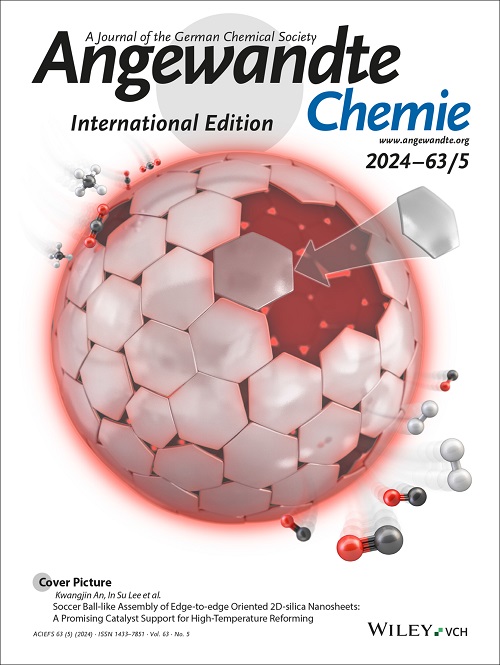Low-Redox-Barrier Two-Electron p-Type Phenoselenazine Cathode for Superior Zinc-Organic Batteries
IF 16.1
1区 化学
Q1 CHEMISTRY, MULTIDISCIPLINARY
引用次数: 0
Abstract
Organic p-type cathode materials with high redox potentials and fast kinetics have captured widespread attention in propelling Zn-organic batteries (ZOBs). However, their anion-accessible capacity is insufficient due to single electron reaction and/or high energy barrier of each redox-active unit. Here we design two-electron-donating p-type organic chalcogen small molecules (phenoxazine (PO), phenothiazine (PS) and phenoselenazine (PSe)) with tuned charge distributions and electron transfer behaviors as cathode materials for ZOBs. With the decrease of chalcogenide electronegativity (O>S>Se), PSe liberates the strongest coordination activity, efficient electron delocalization, and charge storage kinetics with an ultralow redox activation energy (0.23 vs. 0.34 eV of PS and 0.41 eV of PO), which contributes to high dual-electron utilization of phenazine motifs of 99.2% (vs. 68.8% of PS and 52.7% of PO). Consequently, Zn||PSe battery delivers the highest capacity storage (227 mAh g−1) and energy density (273 Wh kg−1) among the reported p-type cells, along with long life (10,000 cycles). A two-electron redox mechanism is unlocked at amine/selenium sites of PSe, accompanied by reversible uptake of two CF3SO3− anions. This study highlights the considerable potential of low-energy-barrier multielectron design for high-performance organic cathodes towards advanced ZOBs.具有高氧化还原电位和快速动力学特性的有机 p 型阴极材料在推动锌-有机电池(ZOBs)方面受到广泛关注。然而,由于单电子反应和/或每个氧化还原活性单元的高能垒,它们的阴离子获取能力不足。在此,我们设计了具有可调电荷分布和电子转移行为的双电子捐献型 p 型有机查尔琴小分子(吩噁嗪(PO)、吩噻嗪(PS)和吩硒嗪(PSe)),作为 ZOB 的阴极材料。随着铬化物电负性的降低(O>S>Se),PSe 释放出最强的配位活性、高效的电子析出和电荷存储动力学,具有超低的氧化还原活化能(PS 为 0.23 eV,PO 为 0.34 eV),这使得酚嗪基团的双电子利用率高达 99.2%(PS 为 68.8%,PO 为 52.7%)。因此,在已报道的 p 型电池中,Zn||PSe 电池的储电量(227 mAh g-1)和能量密度(273 Wh kg-1)最高,而且寿命长(10,000 次循环)。PSe 的胺/硒位点释放出双电子氧化还原机制,并伴随着两个 CF3SO3- 阴离子的可逆吸收。这项研究凸显了低能障多电子设计在高性能有机阴极方面的巨大潜力,从而实现先进的 ZOB。
本文章由计算机程序翻译,如有差异,请以英文原文为准。
求助全文
约1分钟内获得全文
求助全文
来源期刊
CiteScore
26.60
自引率
6.60%
发文量
3549
审稿时长
1.5 months
期刊介绍:
Angewandte Chemie, a journal of the German Chemical Society (GDCh), maintains a leading position among scholarly journals in general chemistry with an impressive Impact Factor of 16.6 (2022 Journal Citation Reports, Clarivate, 2023). Published weekly in a reader-friendly format, it features new articles almost every day. Established in 1887, Angewandte Chemie is a prominent chemistry journal, offering a dynamic blend of Review-type articles, Highlights, Communications, and Research Articles on a weekly basis, making it unique in the field.

 求助内容:
求助内容: 应助结果提醒方式:
应助结果提醒方式:


